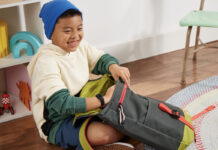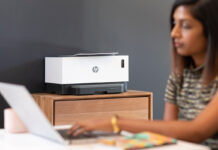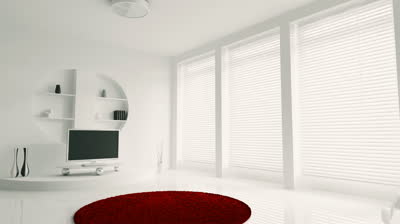 Technology makes everything easier and more accessible. It sounds like a fairly bold statement, but it’s true. My commute to work is made easier by owning a car, and communicating with my friends and family is made easier through owning a phone. No matter how you slice it, if you’re willing to adopt it, technology you need is there for the taking.
Technology makes everything easier and more accessible. It sounds like a fairly bold statement, but it’s true. My commute to work is made easier by owning a car, and communicating with my friends and family is made easier through owning a phone. No matter how you slice it, if you’re willing to adopt it, technology you need is there for the taking.
Keeping your home connected to you through simple technology is easier than ever too, especially when it comes to home security and alarm systems. Home alarm system technology, for example, has been around for decades. However, it has traditionally been a benefit only home owners could enjoy. Expensive, complicated and intrusive installation made it so that most renters would have to luck out and find a place that had a local alarm system already installed prior to moving in. It was very rare to find a very trusting (or generous) landlord willing to have one put in for tenants. What about college students? What recourse did they have outside of a Home Insurance policy (or their parents’ Home Insurance policy) in protecting their valuables?
Nowadays, with a handful of your own smarthome gadgets and a couple hours to hook everything up, you can take control of those situations using your smartphone (and in some cases, your tablet) as your makeshift remote control.
Let’s take a look at how some of today’s security and surveillance options can help you work your way toward that connected home.
Home Security with a 21st Century Twist
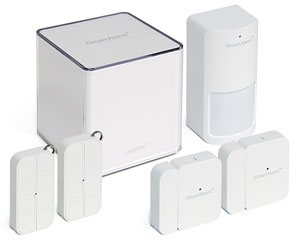 So you’ve just rented a nice apartment, and finished furnishing it, but you’re a bit uneasy about the fact that there’s no alarm system, and you have a few valuables you want to protect. No alarm system? Have a WiFi network at home? No problem. Look at devices like the iSmartAlarm (Review Here) to help you out of a jam. Without the need for complicated wire hookups, or centralized keypads, this system allows you to have the benefit of an alarm system in your home, including motion and window sensors that you have control of through your smartphone. You can set up customized text alerts, and the iSmartAlarm’s Hub (named the CubeOne) can have more devices added to it, so you can purchase more pieces as you need them to add to your system. With little to no hardware needing non-adhesive mounting (you CAN hard mount the motion sensor if you wish,) this means installation with little headache, and a good possibility for you renters who can’t have a traditional local alarm, keypad and all.
So you’ve just rented a nice apartment, and finished furnishing it, but you’re a bit uneasy about the fact that there’s no alarm system, and you have a few valuables you want to protect. No alarm system? Have a WiFi network at home? No problem. Look at devices like the iSmartAlarm (Review Here) to help you out of a jam. Without the need for complicated wire hookups, or centralized keypads, this system allows you to have the benefit of an alarm system in your home, including motion and window sensors that you have control of through your smartphone. You can set up customized text alerts, and the iSmartAlarm’s Hub (named the CubeOne) can have more devices added to it, so you can purchase more pieces as you need them to add to your system. With little to no hardware needing non-adhesive mounting (you CAN hard mount the motion sensor if you wish,) this means installation with little headache, and a good possibility for you renters who can’t have a traditional local alarm, keypad and all.
Once you’ve got that alarm hooked up, maybe you’re interested in surveillance in the apartment as well, but once again, you’re thwarted by the fact that you hard mount cameras or a camera system to your walls and ceilings? Once again, with very little work that you have to do, I have a solution for you. Consider investing in something like the Dropcam Pro (Review Here) which provides you with smart surveillance options for an important area in your home. Much like the iSmartAlarm, you can also set up text alerts on the phone for anything that might be out of the ordinary, and can even set things up to record automatically at the sight of anything you deem to be odd (or continuously record if you wish.) You can also monitor the happenings in your home in realtime through the app. Dropcam also offers a service for you to have these videos sent to cloud storage for a price, with different tiers available for the length of video storage you want. At the size and weight of a typical webcam, and setup that only takes a few minutes, the Dropcam Pro is among the easiest to set up smarthome devices, and is even an affiliate of the Works with Nest program, so it can be paired with even more to make it work to your advantage.
Traditional Surveillance
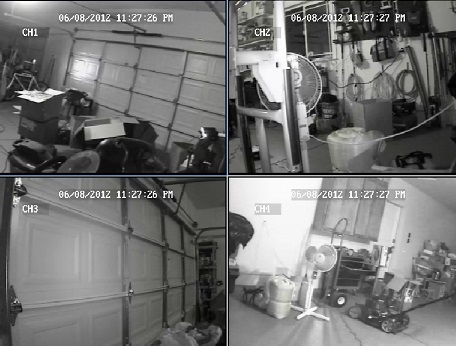 If you own your own place and have the ability to set up a multi-camera surveillance camera system, you can go traditional and have something that records to a PVR-style interface. However, if you crave the best of both worlds (local storage and remote access,) consider something like this Lorex 4-Channel system. In addition to a 500GB master PVR recording system, you can access realtime data and survey the happenings of your home through your smartphone or tablet. You’ll even have access to dynamic settings like choosing when you want the recordings to occur and can have emails or texts sent to you with snapshots of things out of the ordinary. Best of all for Canadians, the system works for up to -40 Celsius, so most of us can keep the system running year round without worrying about the cameras seizing up or freezing due to the cold.
If you own your own place and have the ability to set up a multi-camera surveillance camera system, you can go traditional and have something that records to a PVR-style interface. However, if you crave the best of both worlds (local storage and remote access,) consider something like this Lorex 4-Channel system. In addition to a 500GB master PVR recording system, you can access realtime data and survey the happenings of your home through your smartphone or tablet. You’ll even have access to dynamic settings like choosing when you want the recordings to occur and can have emails or texts sent to you with snapshots of things out of the ordinary. Best of all for Canadians, the system works for up to -40 Celsius, so most of us can keep the system running year round without worrying about the cameras seizing up or freezing due to the cold.
Then, there is also this Swann 8-Channel 1TB surveillance system that also hooks up to your smartphone using the SwannLink Peer to Peer app. The base kit comes with 4 cameras, but can be expanded to 8. The Hard Drive can also be expanded to 4TB, allowing for well over 30 days of continuous recording. This system comes with Weatherproof cameras and Ingress Protection (IP) 67 rating. The IP 67 (which is actually double rated as IP 6-7 as opposed to the number 67) means that it has a 6 rating (the highest) against dust protection, and a 7 rating (up to 1m) immersion rating. The only thing to be aware of for those of you in colder climates is that the cameras are only rated up to -20 Celsius, though those in warmer climates might be happy to know it’s ok for up to 50 celsius.
WiFi surveillance is a helpful tool to have in your back pocket, however, when purchasing, do consider your average weather over the year. There are a lot of devices out there that do the same things, however, some aren’t built to handle harsh weather, and some may only perform well in warmer temperatures. While it may not be so much of an issue for the West Coast where we only see a handful of days below freezing each year, people in Interior BC-Eastward should invest in a device that won’t fail as soon as the snow falls. Most devices will tell you right on the box how well they handle extreme weather, and therefore, which ones should make your cut.
Keeping Connected
 As always, for whichever products you’re looking at, be sure to carefully source whether your smart device can be used with it. For example, you may find that Bluetooth based smarthome devices may have compatibility issues (or no compatibility at all) with older Android devices. Windows Phones may also have limited compatibility. Traditionally, iOS devices have not had the same support question marks, however, you will tend to see a preference toward devices with iOS 7+ and even for generations from iPhone 4 and above. We’re also beginning to see more and more that it’s just iPhones which have the best app availability among all iOS devices, as some apps just aren’t compatible with iPads and therefore, aren’t even available in the App Store.
As always, for whichever products you’re looking at, be sure to carefully source whether your smart device can be used with it. For example, you may find that Bluetooth based smarthome devices may have compatibility issues (or no compatibility at all) with older Android devices. Windows Phones may also have limited compatibility. Traditionally, iOS devices have not had the same support question marks, however, you will tend to see a preference toward devices with iOS 7+ and even for generations from iPhone 4 and above. We’re also beginning to see more and more that it’s just iPhones which have the best app availability among all iOS devices, as some apps just aren’t compatible with iPads and therefore, aren’t even available in the App Store.
This concludes the second part of the Connected Home series on Best Buy Plug In. Please continue to check back for regular installments in helping you turn your home into a connected one.
Click here to read Connected Home: Audio Essentials through Pioneer


